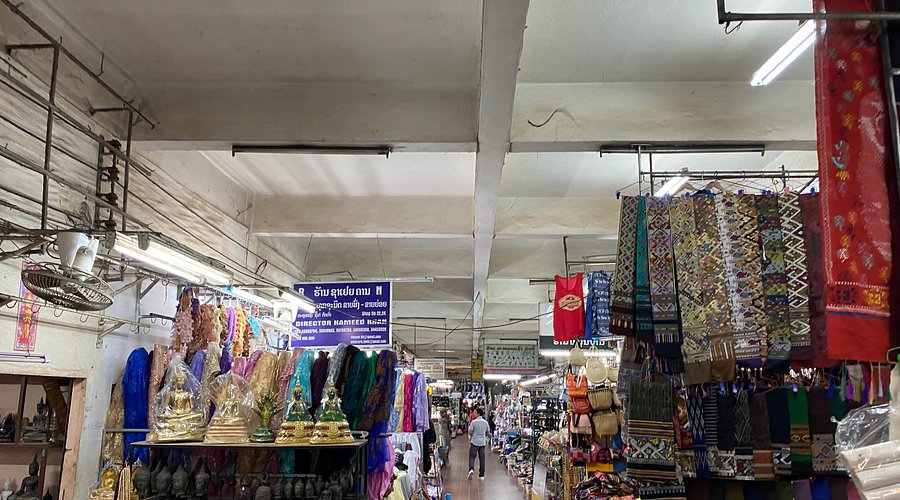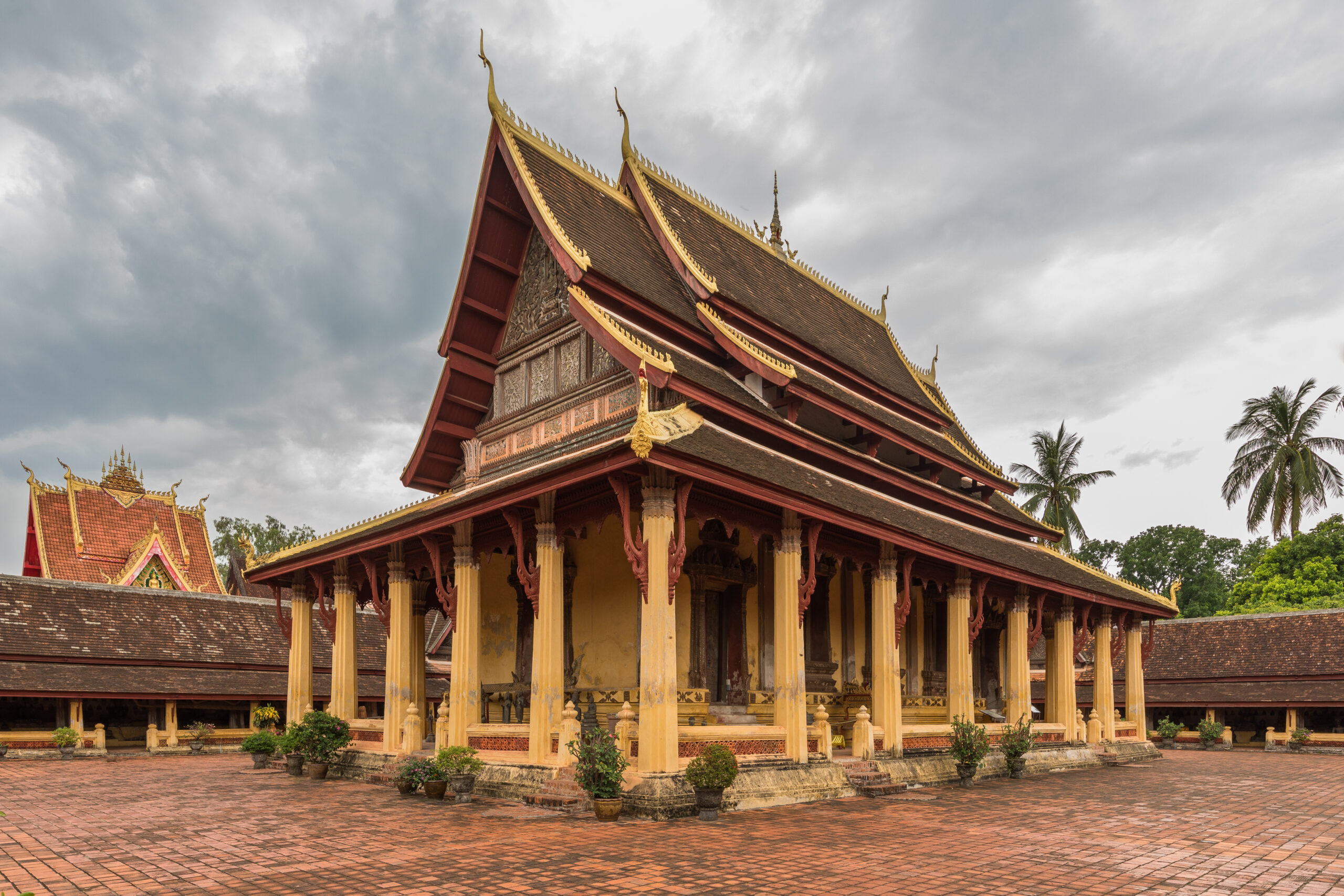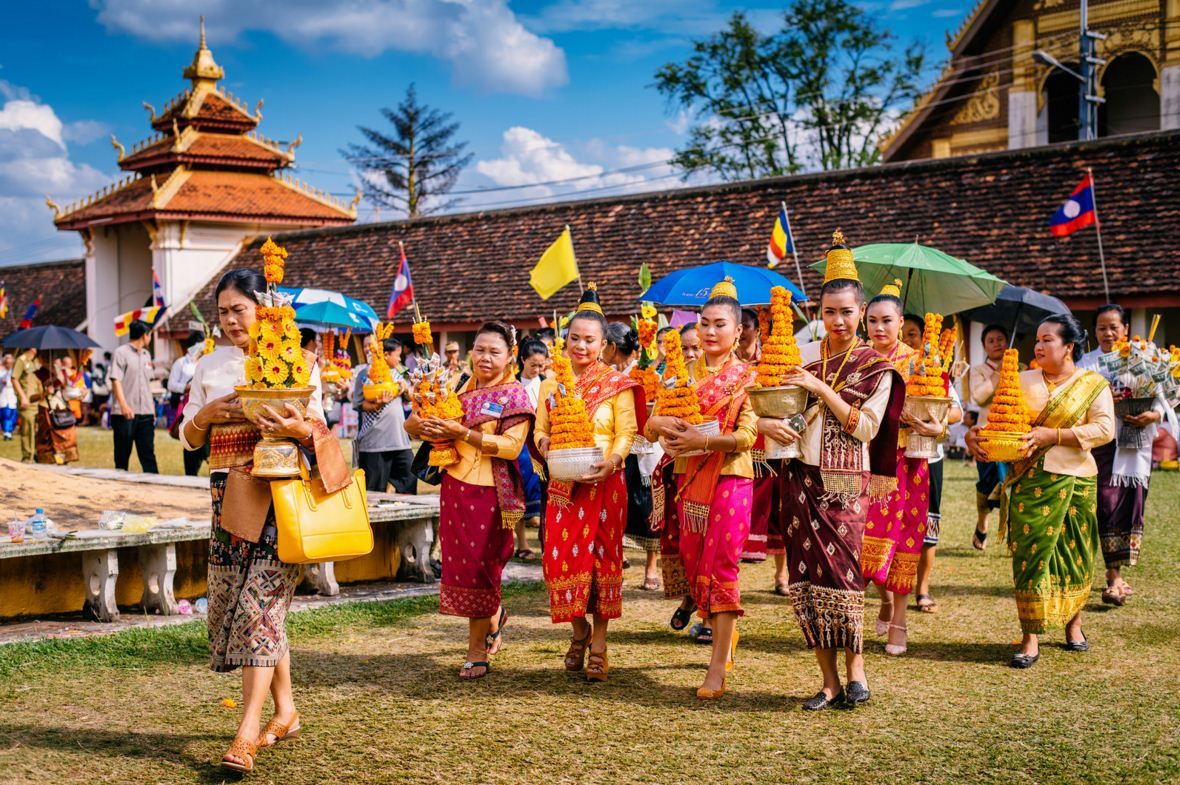1. Overview
2. History of the Place
Talat Sao (Morning Market) has grown to be a central marketplace in Vientiane:
- Establishment: The market was originally set up as a morning market and has expanded over the years.
- Modernization: The market includes an air-conditioned section alongside the traditional outdoor stalls.
- Product Range: Offers a wide range of goods including fresh fruits, vegetables, textiles, clothes, jewelry, and electronics.
- Cultural Significance: The market is an essential part of daily life in Vientiane, reflecting the local culture and commerce.
- Renovations: The market underwent renovations in recent years to modernize facilities.
- Operating Hours: Open daily from 7:00 AM to 4:00 PM, attracting both locals and tourists.
- Accessibility: Located near the main streets of Vientiane, it’s easily accessible by tuk-tuk or taxi.
- Tourist Attractions: The market is close to landmarks like the Nam Phou Fountain and Talat Sao bus station.
- Community Role: It serves as a vital center for small businesses and local commerce.
- Public Space: Popular for locals to shop for daily essentials and tourists to experience the culture.
3. Location
4. What Makes “Talat Sao (Morning Market)” Popular?
Talat Sao is known for its cultural vibrancy and wide selection of goods:
- Local Products: Visitors can find local Lao products, from traditional textiles and handicrafts to fresh produce.
- Cultural Experience: The market offers a real sense of local life in Vientiane, with people from various walks of life interacting.
- Street Food: It’s also a great place to sample local delicacies and enjoy Lao street food.
5. Overall Ratings (1 to 5 Stars)
Talat Sao is highly rated for its cultural relevance and variety of products:
Overall Rating: ⭐⭐⭐⭐⭐ (5/5)
Cultural Significance: ⭐⭐⭐⭐⭐ (5/5)
Authenticity: ⭐⭐⭐⭐⭐ (5/5)
Atmosphere & Environment: ⭐⭐⭐⭐☆ (4/5)
Accessibility: ⭐⭐⭐⭐⭐ (5/5)
Tourist Friendliness: ⭐⭐⭐⭐☆ (4/5)
6. Weather
Vientiane experiences a tropical climate with distinct wet and dry seasons:
Best Time to Visit: November to February (cooler, dry season)
Temperature Range: 25–35°C (77–95°F)
Wet Season: May to October
Rain Gear: Recommended during the wet season.
7. Nearest Five Hotels
For visitors seeking accommodation near Talat Sao, here are five options:
- Sabaidee@Lao Hotel: Comfortable and centrally located with convenient access to major attractions.
- Vientiane Plaza Hotel: A short drive from the market, offering modern amenities.
- Green Park Boutique Hotel: A blend of traditional and contemporary styles, offering a peaceful stay.
- City Inn Vientiane: A budget-friendly option with easy access to the market.
- Ibis Vientiane Nam Phu: Centrally located with essential amenities for travelers.
8. Timings
Talat Sao operates during standard hours:
Opening Hours: 7:00 AM – 4:00 PM daily
Best Time to Visit: Early morning or late afternoon to avoid crowds and experience the market at a more relaxed pace.
9. Time Required to Visit
A visit to Talat Sao typically takes a short to moderate amount of time:
Visit Duration: 1–2 hours
Ideal for: Visitors interested in shopping for souvenirs, fresh food, and experiencing local life.
10. Entry Fees & Ticket Booking Details
There is no entry fee to visit Talat Sao:
Entry Fee: Free
Booking: Not required for general visits.
11. Things to See & Do
Visitors can explore various stalls and enjoy local products and food:
- Explore: The various stalls selling textiles, handicrafts, jewelry, and electronics.
- Try: Local Lao street food like papaya salad and grilled meats.
- Interact: Enjoy the lively atmosphere and interactions with local vendors.
12. Best Time to Visit
The best time to visit is during the dry season when the weather is more comfortable:
Best Time: November to February (cooler, dry season)
Time of Day: Early morning for the freshest produce or late afternoon for fewer crowds.
13. Nearest Parking Spots
Street parking is available near Talat Sao:
Street Parking: Available near the market entrance.
Public Parking: Public parking areas are located around nearby attractions.
Alternative: Tuk-tuks and bicycles are convenient for getting around.
14. Tips for Visitors
- Dress Comfortably: Wear comfortable shoes for walking around the market.
- Stay Hydrated: Bring water, especially if visiting during the hotter months.
- Respect Local Customs: Be mindful of local customs and interactions while shopping.
- Bargain Politely: Haggling is common in markets, so feel free to negotiate with vendors.
15. How to Reach the Place
Talat Sao is centrally located and easily accessible by various modes of transportation:
By Tuk-Tuk: Convenient and affordable for short trips.
By Bicycle: A great way to explore Vientiane at your own pace.
By Foot: If staying nearby, it’s easy to walk to the market.
Taxi: Available for longer trips.
16. Nearby Attractions to Combine for the Visit
While visiting Talat Sao, consider exploring these nearby landmarks:
- Patuxai (Victory Monument): A landmark offering panoramic views of the city.
- That Luang Stupa: The most important Buddhist monument in Laos.
- COPE Visitor Centre: Learn about the impact of unexploded ordnance in Laos.
- Mekong Riverfront: A scenic area for shopping, dining, and relaxing along the river.
- Wat Si Saket: The oldest surviving temple in Vientiane.



